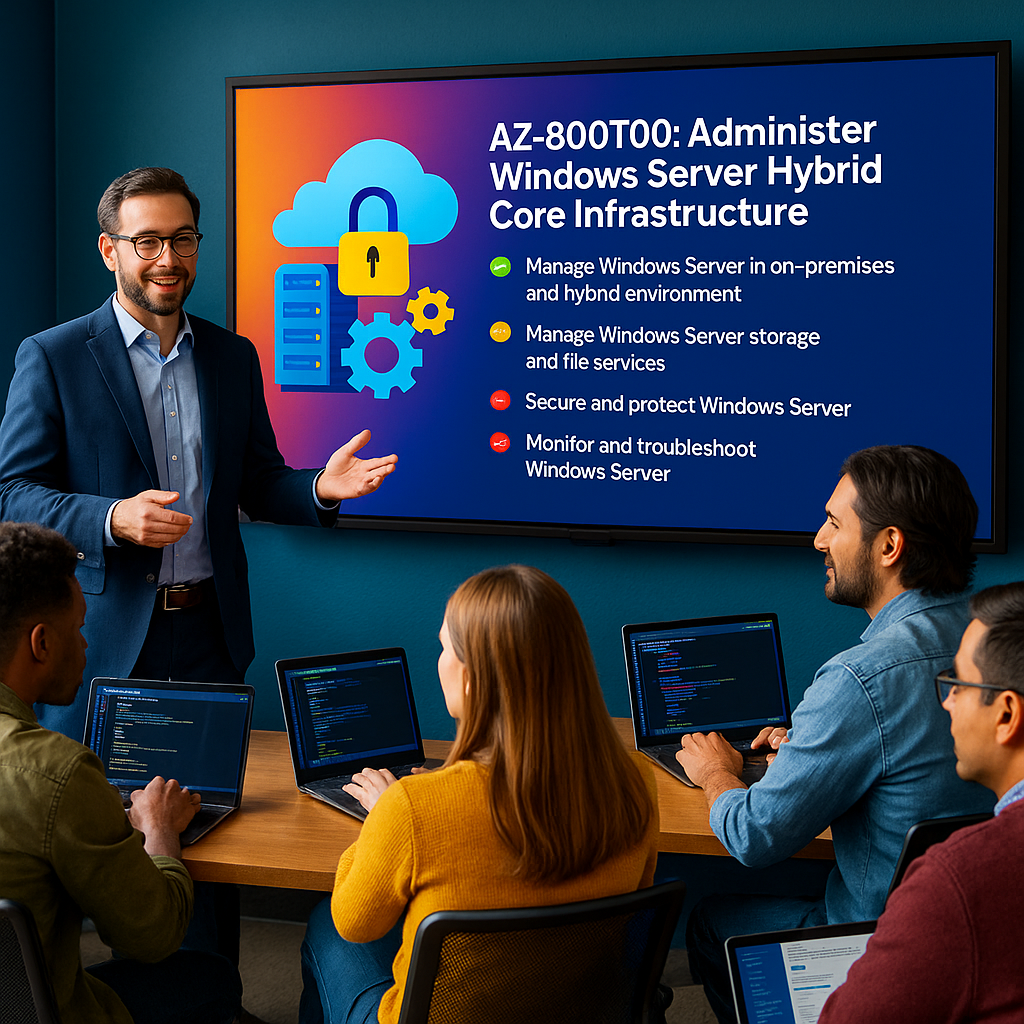Get This Course
$2,495.00
January 6 - 9, 2026
Tentative
9:00 AM – 5:00 PM CST
January 20 - 23, 2026
Tentative
8:00 AM – 4:00 PM MST
March 2 - 5, 2026
Tentative
8:00 AM – 4:00 PM MST
May 11 - 14, 2026
Tentative
7:00 AM – 3:00 PM PST
July 20 - 23, 2026
Tentative
7:00 AM – 3:00 PM PST
Reserve Your Seat
- Virtual instructor Led Training
- Complete Hands-on Labs
- Softcopy of Courseware
- Learning Labs
- Virtual instructor Led Training
- Complete Hands-on Labs
- Softcopy of Courseware
- Learning Labs
- You can use your Purchase Card and checkout
- The GSA Contract Number: 47QTCA20D000D
- Call 800-453-5961 for details
- Customize your class
- Delivery Onsite or Online for your organization
- Choice of Dates when and where you want
- Guidance in choosing and customizing your class
Question About this Course?

Certification: Microsoft Certified: Windows Server Hybrid Administrator Associate
Dynamics Edge courses and labs are enhanced Instructor-Led Training (ILT) materials designed specifically for live, guided instruction and follow a structured curriculum.
Our materials are intentionally different from Microsoft Learn paths in both structure and flow to better prepare for actual work, answer questions, real-time engagement, and deeper learning. Microsoft Learn paths are self-paced study resources.
Learn to Administer Windows Server Hybrid Core Infrastructure AZ-800
You Will Learn:
- Skills to manage hybrid identity,
- Identify tools used to implement hybrid solutions, including Windows Admin Center and PowerShell.
- Implement identity services in Windows Server.
AZ-800 Learn to Administer Windows Server Hybrid Core Infrastructure Course
Course Outline
Question About this Course?
Need help picking the right course?
Contact Us
Call Now
Call Now800-453-5961
×